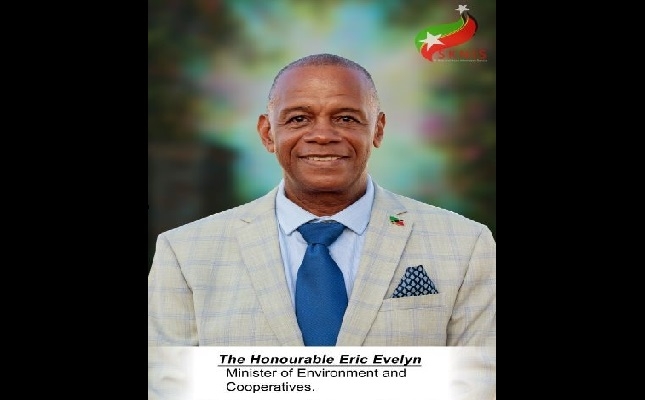|
|
|
Department of Environment implements initiatives to help conserve, preserve and protect the environment

|
|
|
|
|
|
|
|
| By: (SKNIS), Press Release |
|
|
|
|
Basseterre, St. Kitts, June 05, 2021 (SKNIS): Environmental conservation is necessary for many reasons including the protection of the ozone layer, the sustainability of food chains for animals and humans, the preservation of drinking water and the proper use of non-renewable resources. Against this backdrop, the Government of St. Kitts and Nevis and by extension, the Department of Environment has rolled out several initiatives to help conserve, preserve, and protect the environment.
During his address to mark the occasion of World Environment Day 2021, which is observed on June 05 annually, Minister of Environment, the Honourable Eric Evelyn, touched on a few activities including the implementation of a project in St. Kitts and Nevis titled “Addressing Impacts of Acute Land Degradation in the College Street Ghaut in St Kitts and Quarries and Sand Mining Hotspots on Nevis” which the Department of Environment is the lead agency with funding from the Global Environment Facility (GEF).
Proactive measures were taken to reduce land degradation in College Street Ghaut as it has been exposed to excessive soil erosion and flooding for many years. The mainland degradation control measures implemented were gabion baskets and planting of grasses and trees that were strategically located inside the ghaut to stem soil erosion. A gabion is a galvanized wire cage, cylinder, or box filled with materials like concrete, stones, sand, or soil. When filled with these materials, gabion structures act as building blocks and become a powerful and cost-effective defence against erosion.
“By protecting and caring for ghauts, the integrity of the island’s drainage system is protected, the special character of our neighbourhoods and villages are preserved, and the value of individual properties is maintained and enhanced,” said Minister Evelyn. “Left unchecked, erosion of ghauts can cause significant damage. Continued erosion can undermine buildings, roads, and bridges, damage water lines, and can result in the loss of land. In extreme cases, erosion can cause a loss of land area resulting in a corresponding decrease in property value. We are all responsible for taking erosion control measures and for maintaining ghauts in order to protect our land.”
Minister Evelyn noted that the activities in Nevis are being implemented in partnership with the Nevis Historical and Conservation Society (NHCS) via the Integrating Water, Land and Ecosystems Management (IWEco) project. These interventions, he said, “aim not only to reduce land degradation at the local level but also to contribute to the broader national environmental management objectives of the Federation.” The pilot project officially began in May 2020 and will continue over a period of 2 years.
One important project is a Coconut Walk Estate (2017-2019) where over 1300 trees were planted. The IWEco project provided a grant of USD 150,000 to the NHCS to continue its reforestation programme at Coconut Walk (over 10 acres) and to reforest approximately five acres of degraded lands at the abandoned quarry at Potworks Estate. He added that a variety of forest species and fruit trees will be planted, as well as other species of plants such as vetiver grass and sea grape. “These plants have deep root systems which hold the soil together. They also slow stormwater runoff as trees are heavy drinkers and disrupt the overland flow of water and reduce flooding.”
Additionally, the NHCS also teamed up with the St. Thomas’ Improvement Group “to restore the wetland at Nelson Spring by removing non-native invasive cattail reeds and scrub and reopening the beautiful vista to the sea. Native wetland species have been replanted but notably many native species have returned naturally after the removal of the invasive reeds. As such, the overall biodiversity of this wetland has seen much improvement with over 30 species of birds identified by a group of birders in April 2021,” Minister Evelyn said.
Disclaimer
This article was posted in its entirety as received by SKNVibes.com. This media house does not correct any spelling or grammatical error within press releases and commentaries. The views expressed therein are not necessarily those of SKNVibes.com, its sponsors or advertisers
|
|
|
|
|
|
|
|